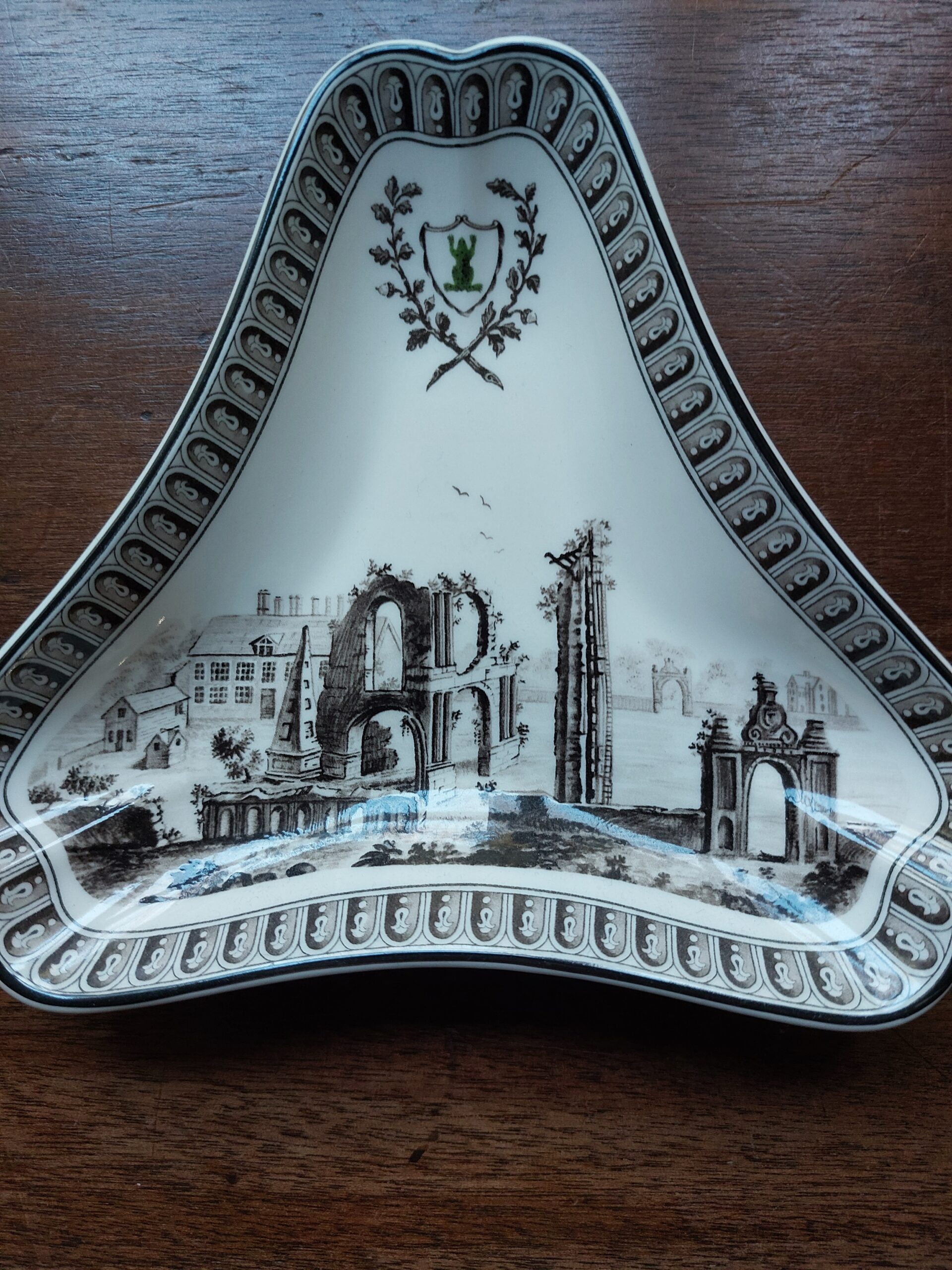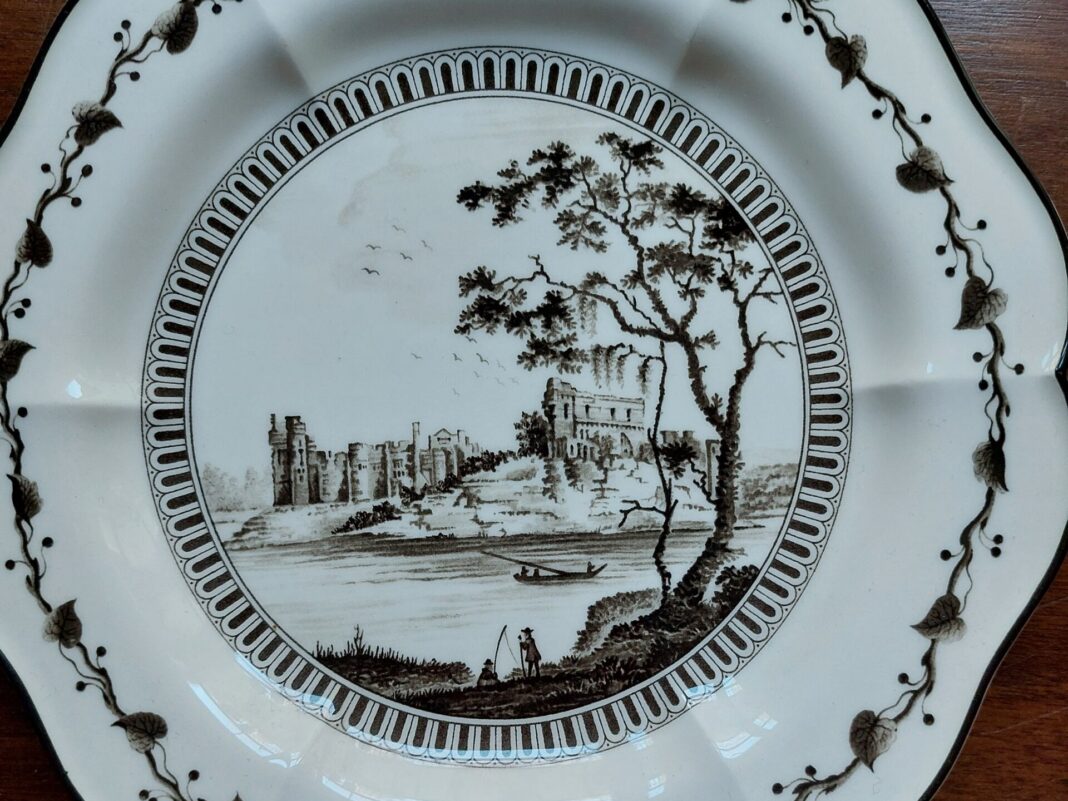Michael Montagu, a former Rye resident takes us on a fascinating journey into the past, an article steeped in history highlighting some of the remarkable achievments of an equally remarkable individual. He explores how Wedgwood’s great service for Empress Catherine, who was obsessed by England, portrayed a landscape threatened by the Industrial Revolution, which Wedgwood himself encouraged.
Without doubt, Josiah Wedgwood was one of the great entrepreneurs of the British Industrial Revolution. He was an inspired designer, practical and with an impressive work ethic. So overwhelming was his ethic that, on May 28, 1768, he submitted to the agony of having his right leg amputated, rather than put up with the pain and inconvenience of a knee damaged by childhood smallpox and a riding accident. Thereafter he managed with a wooden leg, the first made for him by Mr Addison of Long Acre, London, a maker of artists’ lay models. Thus unencumbered, he was able to concentrate on the opening of his great Etruria works in 1769.
Was it his personal reputation, as well as that of his pottery, that first attracted his great “Patroness of the North,” Catherine II, Empress of Russia? Did Catherine perceive some of her own qualities in him? She was, after all, somewhat determined herself, rising from an impoverished minor German royal house to become last empress regnant of Russia, via the deposition, forced abdication and supposed murder of her mentally feeble husband, Tsar Peter III, after an inglorious reign of less than six months. Would she have recognised the strength of character and will that Wedgwood displayed in sacrificing his own leg in order to concentrate on building his business empire?

Catherine made her first purchase from Wedgwood, the 24 person Husk service, in 1770. She was deeply interested in, almost obsessed with, Britain. So much that King George III’s ambassador, Lord Cathcart, wrote in 1768: “Russia is now, by the empress’ firm determined and declared opinions, and will be more so by all her institutions, decidedly English.” She ordered again, in 1773, this time something larger and altogether more important. It was, as Wedgwood wrote to his business partner Thomas Bentley: “The noblest plan ever yet laid down or undertaken by any manufacturer in Great Britain.”
Catherine had built a new palace to celebrate Russia’s naval victory over the Ottomans at the Battle of Chesma in 1770. Called the Chesme Palace, it was just five miles from St Petersburg on the road to the imperial summer residence of Tsarskoe Selo. Even Russian autocrats could travel five miles without a break, so the palace was little used. It did, however, need to be supplied with everything to make it habitable, and Catherine turned again to Wedgwood. The order was placed for a dinner and dessert service of 50 settings, each to be painted with a view of the British countryside – great houses, famous beauty spots, ancient sites, bridges.
The “Imperial Russian service” was to comprise nearly 1,000 pieces, each to have as its crest a green frog, hence its more usual name, the Frog service. The reason for the amphibian was that the palace was near a marsh called Kekerekeksine, the Finnish word for croaking. In French, the language of the court, this became La Grenouillère, Gallic for frogs. Wedgwood was reluctant to “disfigure” the service with the frog, but the message came back that it was essential. Rather than expensive porcelain, the body chosen for the service was a lead glazed earthenware, produced at Wedgwood’s Etruria pottery in Staffordshire, then sent, by a canal that passed Etruria, to be decorated in London at Little Cheyne Row, Chelsea, the decorating workshop. A team of 33 worked on its decoration, which was black and brown on the cream of the pottery body. They completed a total of 1,244 pieces, to allow for breakages. The total number of pieces needed for the service was 952.
Wedgwood described the order as “this very superb commission”, but was aware of the risks. He wrote to Bentley: “Suppose the empress should die when the service is nearly completed… it will be a very expensive business… all the gardens in England will scarcely furnish subjects sufficient for this set.” The expense would have been much greater had he commissioned artists to paint fresh views for the service. To overcome it they used engravings from Buck’s Antiquities, published between 1726 – 42. They also borrowed existing paintings from the owners of estates, all of whom were flattered and some of whom commissioned paintings especially. Pictures from Some Antiquities of England and Wales, published in 1772 by Francis Grose were used. Catherine’s love of gardens was served by 17 views of Capability Brown designed gardens.
When completed, five rooms in the Wedgwood showroom in Greek Street, Soho, were used to display the service, set out as for a dinner. Viewing was initially by invitation only, the invitation extended to those whose estates were shown on the service. Every piece was numbered, to correspond with the index of a catalogue prepared for Catherine. It was then packed into 22 crates and despatched in the autumn of 1774. With it went the bill, £2,290 12 shillings and four pence. Of this the cost of the basic pottery body was just £51.
What Catherine got for her money wasn’t just a dinner service. It was an idealised view of Great Britain, mostly, but not all, from the days before the Industrial Revolution began to change our landscape. The later illustrations showed a few industrial buildings like Plymouth Docks, Rickmansworth paper mill and the Bridgewater canal. The rest showed a view of Arcadia that was, all too soon in many areas, to be changed from a green and pleasant land to a vista of William Blake’s “dark satanic mills”. We can see this all too clearly in Philippe Jacques de Loutherbourg’s painting Coalbrookdale by Night, where smoke and flame from the blast furnaces of the local iron works fill the night sky, creating an image that is more akin to Dante’s Inferno than the fields of Arcady.
From 1709 the iron works of Abraham Darby turned the area into the cradle of the British Industrial Revolution, from which grew a network of canals to transport the products of the burgeoning mills and potteries. Indeed, Wedgwood’s service for Empress Catherine was transported to London by barge, to limit the dangers of breakages had it been entrusted to the potholed roads and rattling wagons of the day. Very appropriate for it was Wedgwood himself, in 1766, who had symbolically cut the first sod of the canal, which was to pass conveniently by his pottery. Ironic perhaps that the man who created the vision of ideal beauty for Catherine also had a hand in its demise.
Image Credits: Michael Montagu .



